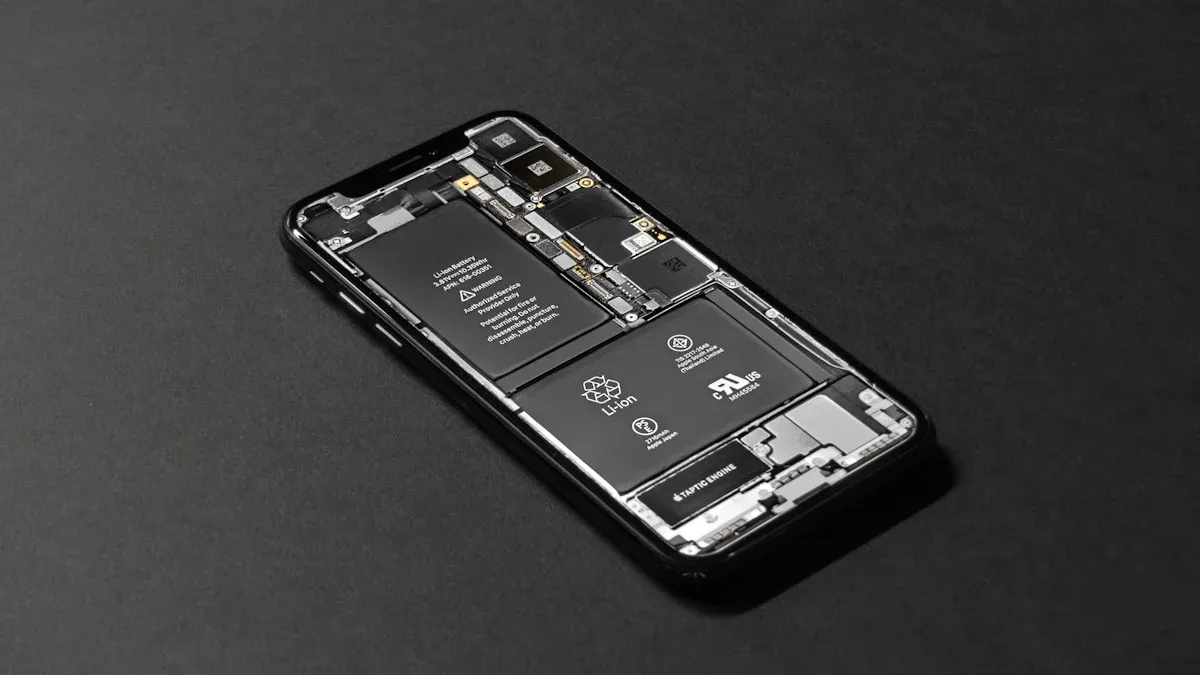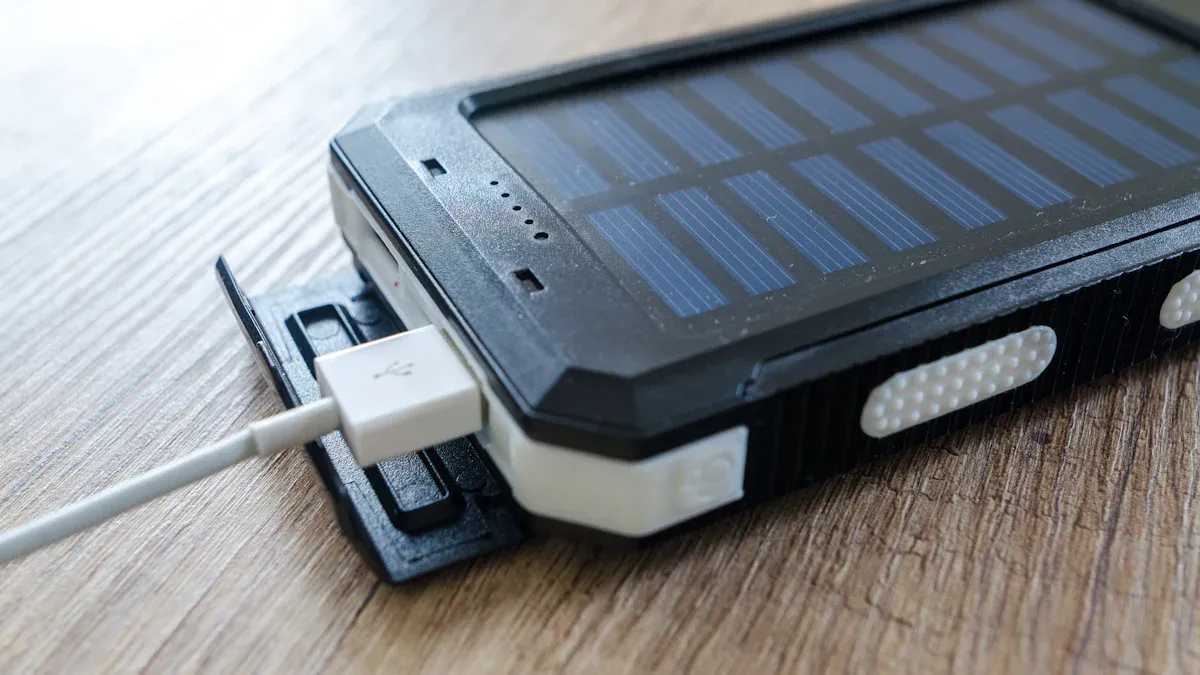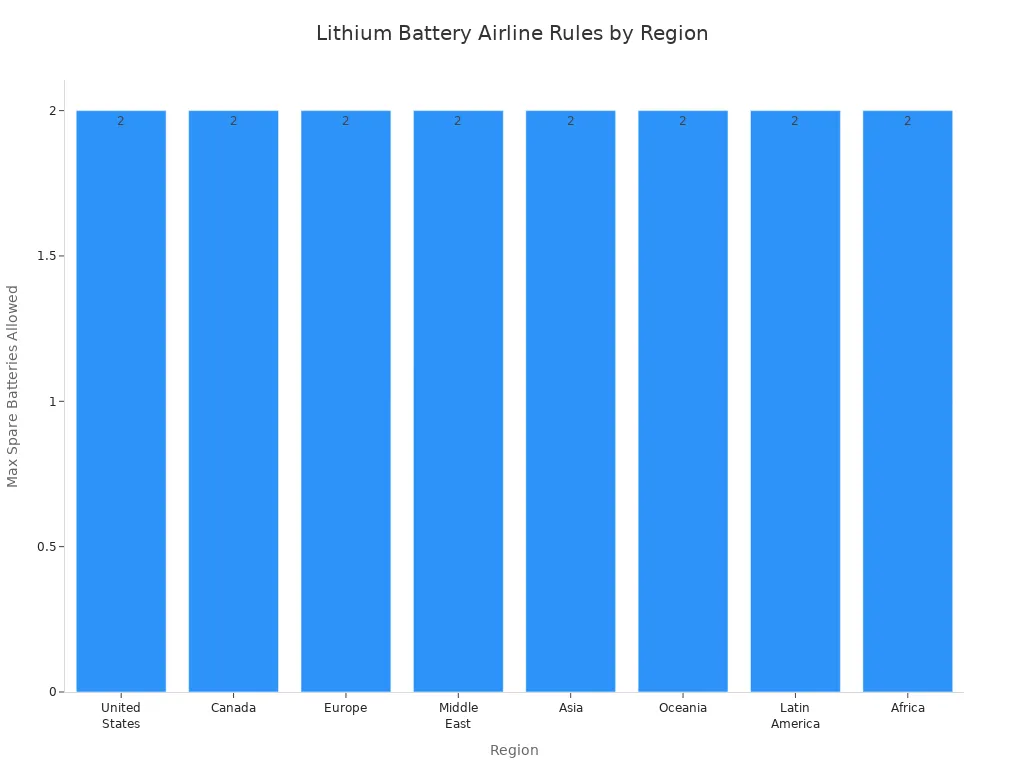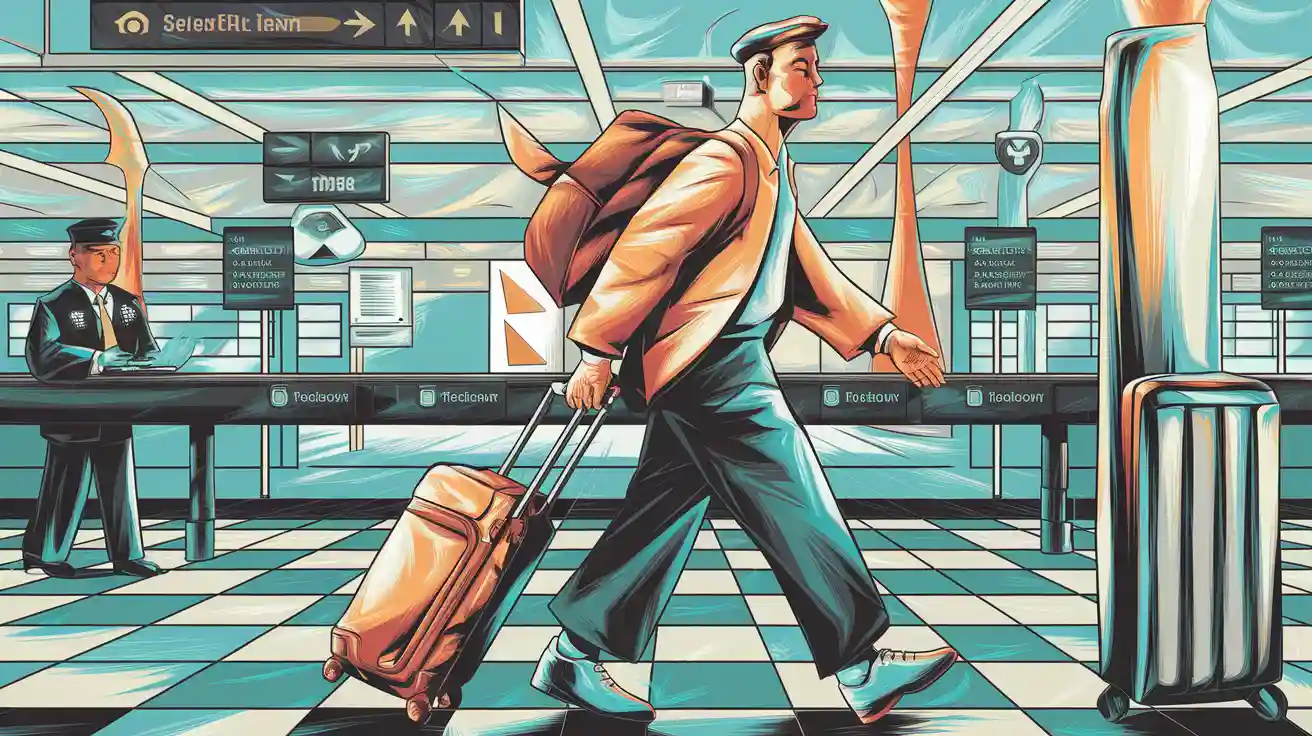How to carry a lithium battery when you fly?
You can carry a lithium battery on a plane, just like 96% of travelers who bring devices powered by these batteries. Most people pack smartphones, laptops, wireless headphones, tablets, or chargers. Airport security pays close attention because lithium batteries can overheat or swell. Following simple steps helps you fly safely and confidently.
Key Takeaways
- Always pack lithium batteries in your carry-on luggage. This rule helps prevent fire hazards and allows for quick crew response in case of overheating.
- Check your airline's specific regulations regarding lithium batteries before traveling. Different airlines may have varying rules, especially for batteries over 100 Wh.
- Protect battery terminals with tape or original packaging to prevent short circuits. Proper packing reduces the risk of accidents during your flight.
Can you carry a lithium battery on a plane?
Airline rules
When you fly, you must follow strict airline rules for lithium batteries. International and domestic regulations set clear limits to keep passengers safe. Airlines like American Airlines, Delta Air Lines, and Frontier Airlines enforce these rules closely. You should check your airline’s website before you travel, as some carriers have stricter policies than others.
Here is a quick overview of current regulations:
| Battery Type | Regulations |
|---|---|
| Large Batteries (100–160 Wh) | Require airline approval; limited to 2 in carry-on, none in checked luggage. |
| Extra-large Batteries (>160 Wh) | Not allowed on passenger aircraft; must be shipped separately as hazmat cargo. |
| Lithium-metal Batteries | Limit of 2 grams of lithium content per battery; allowed only in carry-on luggage. |
| Proper Packing and Protection | Spare batteries must be protected against short-circuit; terminals should be covered. |
| Quantity Limits | For small batteries (<100 Wh), reasonable quantities are allowed; IATA suggests 20 spare batteries. |
If you violate these rules, you risk heavy penalties. Fines can reach $79,976 per day for each violation. Serious incidents may result in fines up to $186,610 or criminal prosecution.
Carry-on vs. checked bags
You must always pack lithium batteries in your carry-on luggage. Airlines do not allow spare lithium batteries in checked luggage. Devices with installed batteries may go in checked luggage, but you should keep them in your carry-on if possible. This rule protects you and other passengers from fire hazards. If a battery overheats, crew members can respond quickly when it is in the cabin.
Tip: Always cover battery terminals with tape or use the original packaging to prevent short circuits.
If you have questions about how to carry a lithium battery, contact your airline before your flight. You will avoid delays and ensure compliance with all safety standards.
What is a lithium battery?

Lithium batteries power most of the portable devices you use every day. You find them in smartphones, tablets, laptops, cameras, wireless headphones, and even electric toothbrushes. These batteries store energy efficiently, making your devices lighter and longer-lasting. When you travel, you carry multiple devices, each with its own lithium battery. You rely on these batteries for convenience and productivity during your flight.
Common devices
You use lithium batteries in a wide range of devices. Here are some examples:
- Smartphones and tablets
- Laptops and e-readers
- Wireless headphones and earbuds
- Smartwatches and fitness trackers
- Cameras and camcorders
- Portable gaming consoles
- Power banks and backup chargers
- Electric shavers and toothbrushes
- Drones and remote-controlled toys
- Medical devices such as hearing aids and glucose monitors
Each device contains a battery designed for its specific power needs. You often pack several devices for your trip, so understanding battery safety helps you avoid problems at airport security.
Battery types
You encounter different types of lithium batteries in your devices. The most common are lithium-ion batteries, which you find in laptops, phones, and tablets. These batteries recharge easily and offer a good balance of safety and performance. Some devices use lithium-metal batteries, which are lighter but not rechargeable.
Here is a comparison of battery types and their safety risks:
| Battery Type | Chemical Composition | Safety Risks |
|---|---|---|
| Lithium Batteries | Contain pure lithium metal | Highly reactive, prone to overheating and fire |
| Lithium-Ion Batteries | Use lithium compounds (e.g., lithium cobalt oxide) | Less reactive, safer, and rechargeable |
You also see several lithium-ion battery chemistries in your devices:
| Type | Applications | Energy Density | Safety | Lifespan | Cost |
|---|---|---|---|---|---|
| Lithium Cobalt Oxide (LiCoO2) | Smartphones, laptops, tablets | High | Low | Medium | High |
| Ternary Lithium (NCM/NMC) | Electric vehicles, electronics, tools | Medium to High | Medium to High | High | Variable |
| Lithium Iron Phosphate (LiFePO4) | Electric vehicles, energy storage | Low to Medium | High | Very High | Low |
| Lithium Manganese Oxide (LiMn2O4) | Power tools, power banks, budget EVs | Low | Higher | Low | Low |
Note: Improper disposal of lithium batteries from your devices can harm the environment. Toxic elements may pollute soil, water, and air. Manufacturers often keep battery components secret, making recycling difficult. You help protect the environment by recycling batteries properly after your trip.
How to carry a lithium battery safely

Lithium batteries require careful handling when you fly. You must follow strict guidelines to ensure safety during travel. Airlines and regulators treat these batteries as dangerous goods because they can overheat or catch fire if packed incorrectly. By following the right steps, you can carry a lithium battery without worry and reduce fire risk for everyone on board.
Packing steps
You should always pack lithium batteries in your carry-on luggage. Never place spare batteries in checked bags. Airlines enforce this rule to reduce fire risk and allow crew members to respond quickly if a problem occurs. Use these step-by-step guidelines to pack your batteries safely:
- Keep batteries in their original packaging. This protects the battery and makes identification easy at security.
- If you do not have the original packaging, place each battery in a secure Ziploc bag. This prevents contact with metal objects or other batteries.
- Tape the terminals of loose batteries. Use non-conductive tape to cover the ends and prevent accidental short circuits.
- Store batteries away from sharp objects, coins, or keys. These items can damage the battery or cause a short circuit.
- Limit the number of spare batteries you carry. Most airlines follow the IATA guideline of 20 spare batteries under 100 Wh per passenger.
Tip: Always check your airline’s guidelines before you travel. Some carriers may have stricter rules for how you carry a lithium battery.
Terminal protection
Protecting battery terminals is essential to reduce fire risk. Exposed terminals can touch metal objects and cause a dangerous short circuit. You have several options to protect terminals during travel:
- Leave batteries in their retail packaging.
- Cover battery terminals with non-conductive tape.
- Use a battery case designed for your device.
- Place batteries in a battery sleeve inside a camera bag.
- Put batteries snugly in a plastic bag or protective pouch.
These guidelines help you travel safely with lithium-ion batteries and prevent accidents. Always separate each battery and make sure nothing can touch the terminals.
Watt-hour limits
Airlines set strict watt-hour (Wh) limits for lithium batteries. You must know the capacity of each battery you plan to bring. The guidelines are clear:
| Battery Capacity | Carry-on Luggage | Checked Luggage | Airline Approval Needed |
|---|---|---|---|
| Up to 100 Wh | Yes (up to 20 spares) | No | No |
| 100–160 Wh | Yes (max 2) | No | Yes |
| Over 160 Wh | No | No | Must ship as cargo |
You can carry a lithium battery up to 100 Wh in your carry-on luggage without special approval. For batteries between 100 and 160 Wh, you may bring up to two, but you must get airline approval first. Batteries over 160 Wh are not allowed on passenger flights and must be shipped as hazardous cargo.
Note: Always check the label on your battery for the watt-hour rating. If you cannot find it, contact the manufacturer or your airline for help.
Lithium batteries can cause thermal runaway, a dangerous chain reaction that leads to fire or explosion. Short circuits, overcharging, and physical damage increase this risk. Many travelers do not realize which devices contain lithium batteries, so always double-check your electronics before you pack.
New technology, such as solid-state batteries and advanced battery management systems, improves safety. However, you must still follow all guidelines and safety rules and regulations when you carry a lithium battery. Proper packing and protection remain the best way to reduce fire risk and ensure a safe flight for everyone.
What to do if there’s a battery problem
Damage or malfunction
You may notice a lithium battery swelling, leaking, or overheating during your flight. These signs indicate damage or malfunction. If you spot any of these issues, act quickly to protect yourself and others. Notify a flight attendant immediately. Do not touch or move the device if it feels hot or emits smoke. Airlines train crew members to handle battery incidents safely.
Lithium battery malfunctions remain rare. The FAA reported only 50 battery-related incidents on planes in 2018. This number is small compared to the billions of passengers who fly each year. However, incidents have increased by 28% from 2019 to 2023. You should stay alert and follow safety instructions.
| Step | Action | Importance |
|---|---|---|
| 1 | Contain the fire | Prevents the fire from spreading |
| 2 | Cool the device with water | Stops the chemical reaction of thermal runaway |
| 3 | Manage smoke | Reduces exposure to toxic vapors |
Emergency steps
If a lithium battery catches fire or malfunctions, you must follow emergency procedures. Flight attendants will relocate passengers away from the device. They use a halon, halon replacement, or water extinguisher to put out the fire. After extinguishing the flames, they cool the device with water or non-alcoholic liquids for at least 15 minutes. This step prevents reignition and stops thermal runaway.
- Use a halon or water extinguisher to put out the fire.
- Cool the device with water or non-alcoholic liquids.
- Do not use ice or attempt to move a burning device.
You should listen to crew instructions and remain calm. Managing smoke is important because lithium battery fires release toxic vapors. If you feel unwell, ask for medical help. Quick action and proper procedures keep everyone safe during a battery emergency.
Airline policies and reminders
Finding airline rules
You need to check airline regulations before you fly with lithium batteries. Each airline sets its own rules for battery transport, so you must review the latest requirements. Most airlines follow international regulations, but some have stricter policies. You can find these rules on the airline’s official website or by contacting customer service. The table below shows how major airlines in different regions handle lithium battery transport:
| Region | Airline(s) | Requirements |
|---|---|---|
| United States | American Airlines, Delta, United, Southwest | Approval required; max 2 spares allowed (101–160Wh), carry-on only. Notify airline prior to travel or at check-in. |
| Canada | Air Canada | Approval required at check-in; max 2 spare batteries, carry-on only. |
| Europe | British Airways, Lufthansa, Air France | Prior approval needed; max 2 spare batteries, carry-on only. |
| Middle East | Emirates, Etihad, Qatar Airways | Advance approval required; typically via airline's Dangerous Goods team; max 2 spares, carry-on only. |
| Asia | Cathay Pacific, Singapore Airlines, China Airlines | Prior approval or declaration at check-in required; 2 spare batteries max, carry-on only. |
| Oceania | Qantas, Air New Zealand | Approval or declaration required; max 2 spare batteries, carry-on only. |
| Latin America | LATAM, Avianca | Prior airline approval or notification required; limited to 2 spare batteries, carry-on only. |
| Africa | Ethiopian Airlines | Prior approval strongly recommended; 2 spare batteries max, carry-on only. |

Recent changes in airline regulations affect how you transport power banks and lithium batteries. Many airlines now prohibit charging or using power banks during flights. You must keep these devices with you and avoid storing them in overhead bins. The table below highlights new policies:
| Airline | Policy Change Description | Effective Date |
|---|---|---|
| Air Busan | Prohibited power banks in overhead cabin bins; must be kept with passengers. | March 14, 2025 |
| South Korean Airlines | Tightened rules for power banks and e-cigarettes; must be kept with passengers. | March 1, 2025 |
| Hong Kong Airlines | Prohibited use and charging of power banks during flights; must not be stored overhead. | April 7, 2025 |
| AirAsia | Banned use and charging of power banks on flights; must be stored under the seat. | April 1, 2025 |
| Air Astana | Prohibited charging or using power banks during flights; must be kept in hand luggage. | March 13, 2025 |
| Batik Air | Prohibited use of power banks in flight; only two may be carried on person. | March 14, 2025 |
| China Airlines | Prohibited use or charging of power banks during flights. | March 1, 2025 |
| EVA Air | Prohibited charging and using power banks on flights. | March 1, 2025 |
| Singapore Airlines | Prohibited use and charging of portable power banks during flights. | April 1, 2025 |
| Thai Airways | Prohibited use and charging of power banks during flights. | March 15, 2025 |
| VietJet | Prohibited charging or using power banks during flights; must be monitored. | March 24, 2025 |
Tip: Always check the latest airline regulations before you travel. Rules can change quickly, and you must comply with all transport requirements.
When to contact your airline
You should contact your airline if you plan to transport lithium batteries over 100 Wh. Approval is necessary for batteries between 101 Wh and 160 Wh. You may carry up to two such batteries in your carry-on luggage. Airlines require you to notify them before your flight or at check-in. The process usually involves submitting a request through the airline’s website or speaking with a representative.
- Contact the airline in advance for batteries over 100 Wh.
- Prepare documentation showing battery watt-hour ratings.
- Confirm approval before arriving at the airport.
The table below summarizes documentation requirements for lithium battery transport:
| Battery Type | Requirement |
|---|---|
| 101 Wh to 160 Wh | Requires airline approval before flying |
| Limit per passenger | Two (2) in carry-on, none in checked baggage |
| Over 160 Wh | Not allowed on passenger aircraft |
| Exceptions | Certain mobility devices with specific rules |
You must follow all regulations for safe transport. If you have any doubts, contact your airline for guidance. This step helps you avoid delays and ensures compliance with airline regulations.
You can carry lithium batteries safely by following these steps:
- Use protective cases for all batteries.
- Check the watt-hour rating and quantity limits.
- Keep batteries in your carry-on and cover terminals.
Airline policies protect you and make travel with lithium batteries easy. Always review your airline’s rules before flying.
-

 May.2025.11.24Ternary Lithium Battery vs Lithium-ion: Complete Comparison Guide (2025 Edition)Learn More
May.2025.11.24Ternary Lithium Battery vs Lithium-ion: Complete Comparison Guide (2025 Edition)Learn More -

 May.2025.11.214S2P 18650 14.8V Battery: Complete Technical Guide, Specs, Applications & SafetyLearn More
May.2025.11.214S2P 18650 14.8V Battery: Complete Technical Guide, Specs, Applications & SafetyLearn More -

 May.2025.11.18PCM vs BMS in Lithium Batteries: What’s the Difference and Which One Do You Need?Learn More
May.2025.11.18PCM vs BMS in Lithium Batteries: What’s the Difference and Which One Do You Need?Learn More -

 May.2025.11.17Custom Li-ion Battery Design for Medical Devices (2025 Comprehensive Guide)Learn More
May.2025.11.17Custom Li-ion Battery Design for Medical Devices (2025 Comprehensive Guide)Learn More -

 May.2025.11.17The Future of Lithium-Ion Batteries: Innovation, Sustainability, and Global Market TrendsLearn More
May.2025.11.17The Future of Lithium-Ion Batteries: Innovation, Sustainability, and Global Market TrendsLearn More
















